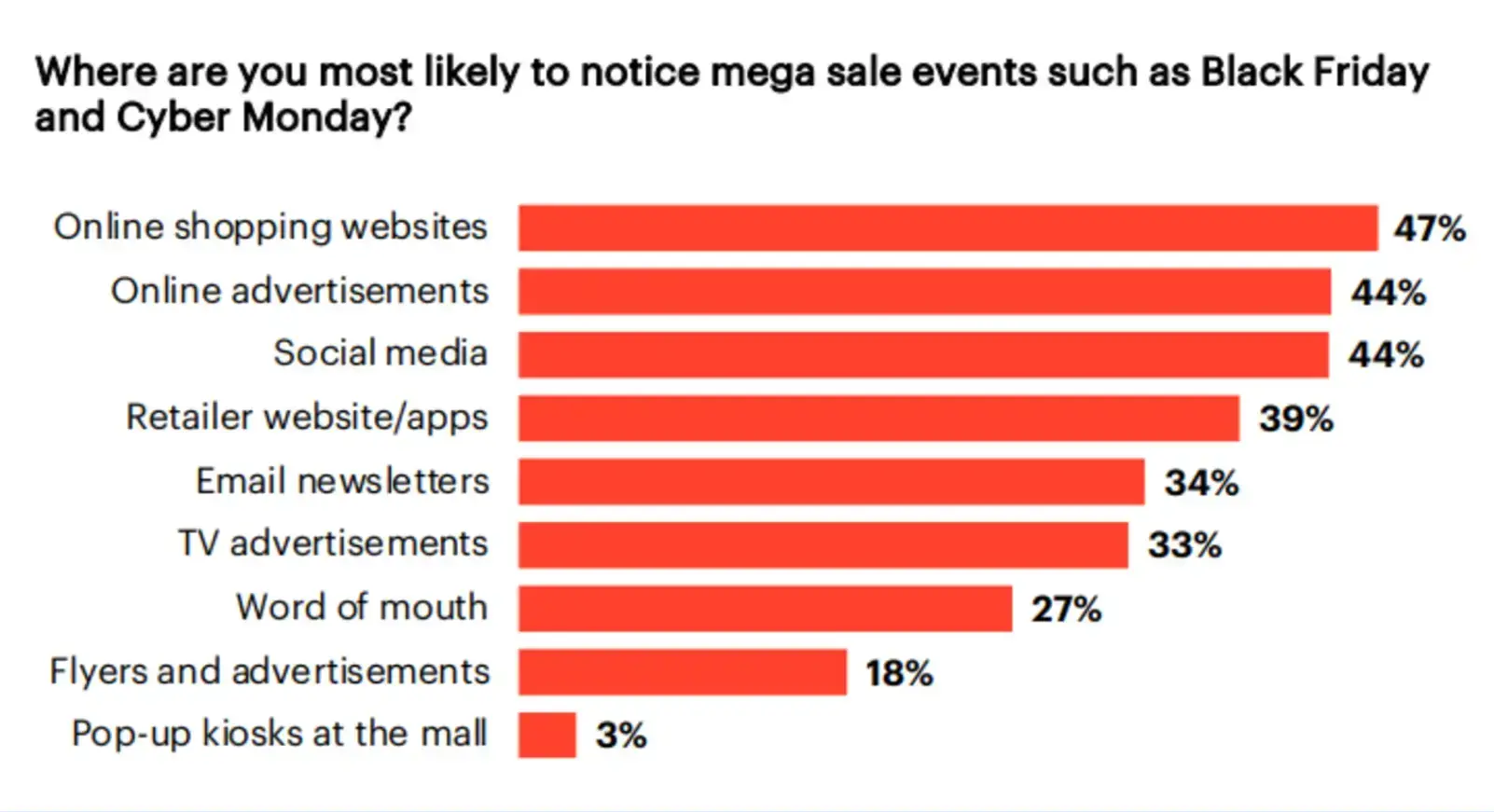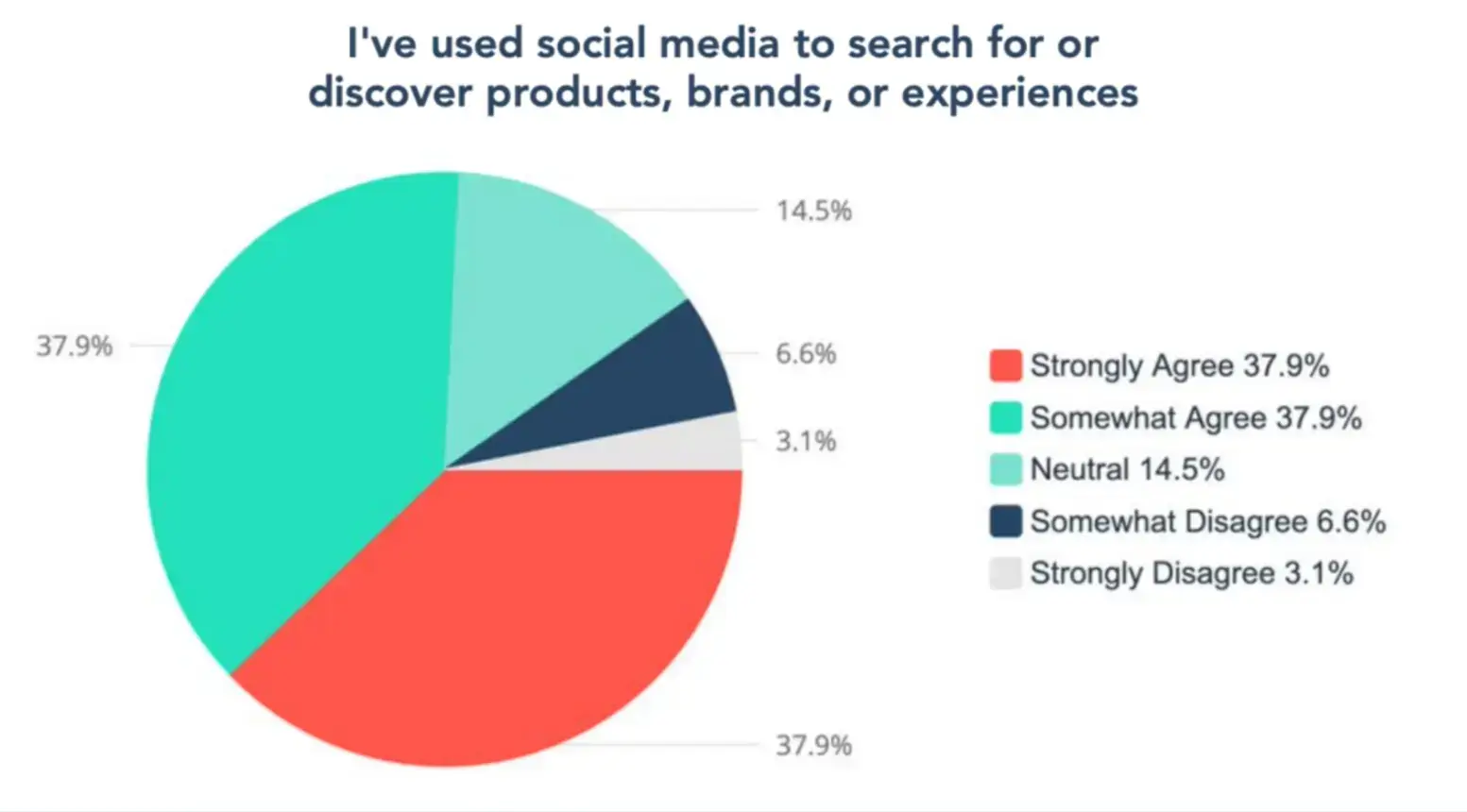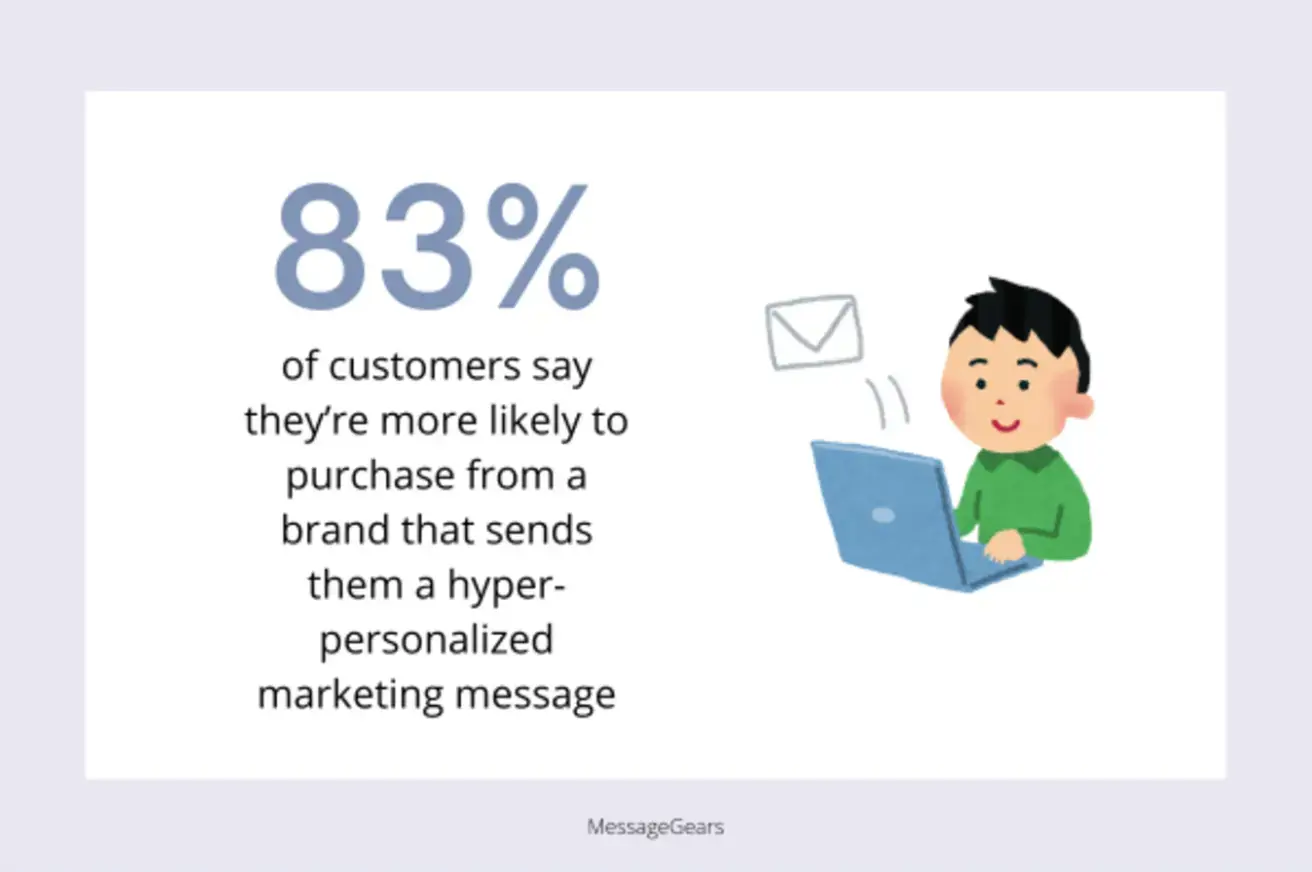Black Friday marks the beginning of the festive shopping period — and what better way to encourage customers to splash their cash than with a huge Black Friday sale?
Digital prospecting uses digital channels to target high-value new customers with personalized messages and ads to drive conversions.
Black Friday is the perfect time for prospecting because it’s when customers are actively searching for deals online and are more open to trying new brands.
A recent YouGov survey backs this up. 36% of customers said they plan to do some Black Friday shopping this year. And what channels are they using to discover Black Friday deals?

Shortcuts:
- What is Digital Prospecting?
- Benefits of Prospecting for Black Friday Campaigns
- Digital Prospecting for Targeted Black Friday Campaigns

Source: YouGov
So, let’s discuss how to do digital prospecting at scale to get more eyes on your Black Friday campaigns and maximize your revenue.
What is Digital Prospecting?
Digital prospecting is the process of using online channels to find and reach out to potential customers who’ve never had any interactions with your brand before.
It uses a combination of inbound and outbound prospecting methods to engage and convert high-value, targeted leads.
Inbound prospecting uses inbound marketing tactics to attract high-value prospects and convert them into customers passively. Instead of directly chasing potential customers, it leverages targeted advertising via social media and search engines to pull customers in.
To do digital prospecting successfully, marketers and sales teams need to understand their target audience on a deep level.
They need to know their target customer’s demographics, interests, purchasing motivations, and content preferences to deliver upfront value and personalized messages.
Before we discuss how to use digital prospecting for your Black Friday campaigns, let’s quickly take a look at the benefits.
Benefits of Prospecting for Black Friday Campaigns
Digital prospecting takes time, effort, and careful strategizing to drive results. So, is it worth it? Here’s why you should try it this Black Friday:
1. Generate new customers
Digital prospecting unlocks global scalability. Without the limitations of location, you can find high-value prospects around the world and target them with personalized Black Friday deals and offers.
Do it right, and you can secure loyal customers that continue to purchase long after the Black Friday sales are over.
2. Gain a competitive edge
With all of your competitors rolling out their best deals, you need to stand out from the crowd during the Black Friday season.
Prospecting gives you the opportunity to quickly identify high-value leads and target them with personalized messages and exciting offers before your competitors get a look in.
3. Increase revenue and ROI
Digital prospecting borrows cost-efficient lead generation strategies. Specifically, it prioritizes your prospecting efforts on potential customers who are most likely to convert and/or make high-value purchases.
Not only does this increase sales and average order volumes, but it reduces your marketing budget and drives a higher ROI.

Digital Prospecting for Targeted Black Friday Campaigns
Are you ready to put digital prospecting into practice? Let’s explore some strategies and tips to use this Black Friday.
1. Create an ideal customer profile (ICP)
An ideal customer profile (ICP) is a theoretical yet data-driven description of your perfect customer. It describes the key attributes of customers who will find the most value in the products and services you sell.
Useful in both B2B and B2C prospecting, an ICP helps you narrow down your target audience by distinguishing their unique and specific circumstances, traits, pain points, and needs.
They rely on accurate data, which you can collect through market research, CRM systems, and analytics platforms. ICPs are made up of the following details:
- Demographics: Age, gender, location, income, occupation, family structure
- Psychographics: Lifestyle, values, and interests.
- Behavioral data: Online browsing and purchasing habits, brand interactions, types of content consumed, and products used.
- Purchase intent: What type of buyer is your ideal customer (impulsive, price-sensitive, analytical, etc)? Are they active or passive?
With a comprehensive ICP in place, you can clearly identify targeted leads — potential customers that are highly likely to convert — and successfully personalize your Black Friday campaigns.
2. Leverage social media outreach
With billions of consumers on social media, it’s the first place you should begin your prospecting efforts.
75% of consumers are using social media platforms like Facebook, Instagram, and LinkedIn to search for and discover new brands and products — and for 68% of customers, this discovery has led to a purchase.

Source: TINT
Once you’ve established a presence on the platforms your customers use, you can use social analytics to identify customers who are interested in your niche and target them with dynamic Black Friday ads.
The “Lookalike Audiences” feature takes data from your existing customers — such as your most loyal ones — and identifies individuals with similar characteristics who haven’t yet interacted with your brand. From there, you can display ads to a cold audience with a high chance of converting.
There are lots of different types of ads you can create — video, carousel, image, and story ads. Make them eye-catching and instill a sense of urgency to drive conversions.
For B2B companies, LinkedIn provides extra opportunities for personalized outreach. You can use advanced features to identify high-value prospects and send customized messages straight to their inbox.
3. Use contextual targeting
Contextual targeting shows online ads to potential customers based on the context of the webpage or app they’re currently viewing.
For example, customers reading content on a tech ecommerce website might be shown paid ads relating to phones, laptops, and sound systems.
Contextual targeting is a powerful digital prospecting technique that aligns your ecommerce ads with the current needs and interests of potential customers.
This is crucial for Black Friday campaigns, where purchasing decisions tend to be more impulsive and emotional.
It also allows you to use the content environment to reach customers who match your ICP, driving brand recognition, engagement, and conversions.

Source: Google Ads
4. Reach customers with hyper-personalized emails
Email is invaluable to digital prospecting strategies. With consistently high engagement levels, email remains a reliable channel for reaching out to and connecting with customers who are unfamiliar with your brand.
In fact, 51% of customers surveyed by MessageGears said they prefer marketing messages via email.
Email segmentation involves grouping prospects based on specific characteristics or actions so that you can target each customer with personalized messages.
Hyper-personalized messages resonate with customers’ specific needs and pain points. According to MessageGear, 83% of customers say they’re more likely to make a purchase after receiving a hyper-personalized marketing message.

Source: MessageGears
Tips for hyper-personalized emails:
- Address the customer by name
- Use urgency-driven subject lines
- Tailor your value proposition
- Offer personalized product recommendations
- Provide exclusive discounts relevant to their needs
- Gamify the experience (“spin the wheel,” quizzes, etc.)
- End with a strong CTA
5. Partner with influencers
Done right, influencer marketing can be a powerful digital prospecting strategy.
Social media influencers have ready-made audiences that trust their opinions. 81% of customers have purchased or considered a brand based on an influencer’s recommendation.

Source: Matter
The key is finding niche influencers whose audience aligns with your own. Incentivize them to promote your Black Friday deals and reach an entire new market of potential customers.
6. Embrace a multi-channel strategy
Your target audience will bounce between different platforms, especially during Black Friday. Meet them where they are with a multi-channel approach.
For example:
- Identify individuals on LinkedIn and send custom messages
- Use Facebook ads to target lookalike audiences
- Leverage email for personal discounts
- Use contextual targeting to place strategic ads
- Utilize an omnichannel contact center to centralize communication
7. Use AI to automate prospecting
Manual prospecting is time-consuming — that’s why automation is key.

Using automation, teams can scale and enhance productivity:
- Automated data collection: Tools like LinkedIn Sales Navigator gather qualified leads based on job titles, company size, and industry.
- Lead scoring: Algorithms assign scores to prospects based on demographics and engagement, helping prioritize the best leads.
- Email automation: Automatically schedule and personalize prospecting emails for Black Friday campaigns.
- Automated advertising: Run paid ads targeting specific audiences at optimal times.
FAQ: Digital Prospecting for Black Friday
What are the two types of prospecting?
There are two types of prospecting: outbound and inbound. Outbound prospecting initiates contact through cold email, social outreach, or phone.
Inbound prospecting waits for customers to make the first contact through content and engagement.
What is the best method of prospecting?
The best digital prospecting method is the multi-channel approach — combining email, social media, and mobile to reach potential customers wherever they’re most likely to convert.
What’s the difference between digital prospecting and lead generation?
- Digital prospecting proactively reaches out to targeted leads who haven’t interacted with your brand.
- Lead generation passively captures interest through content and nurture campaigns without direct outreach.
Conclusion
Digital prospecting can complement your inbound marketing strategies to attract new customers during the competitive Black Friday period.
Once you’ve created ideal customer profiles, reach out using contextual targeting, personalized emails, and social media outreach — while leveraging automation to streamline the process.
The best part? Black Friday customers are already searching for deals, making them highly receptive to targeted communications.
So, get creative and promote your sales to attract new customers and boost your seasonal revenue.


